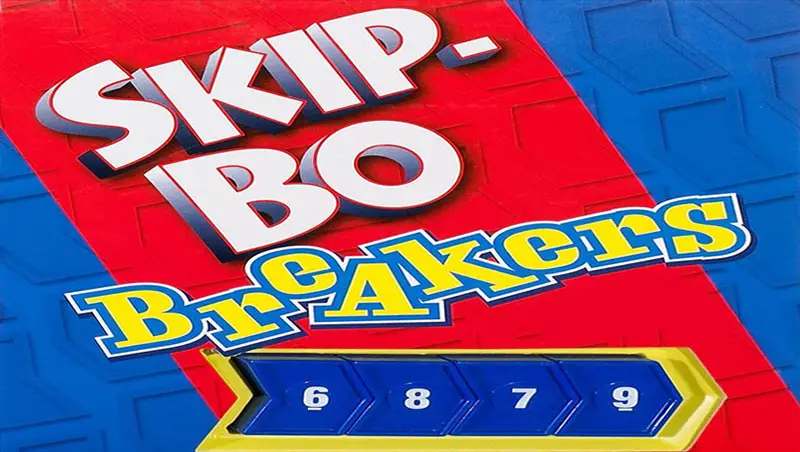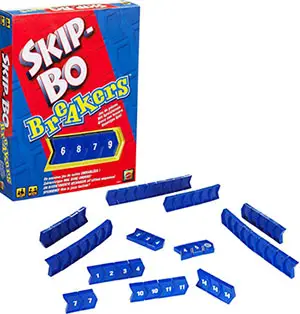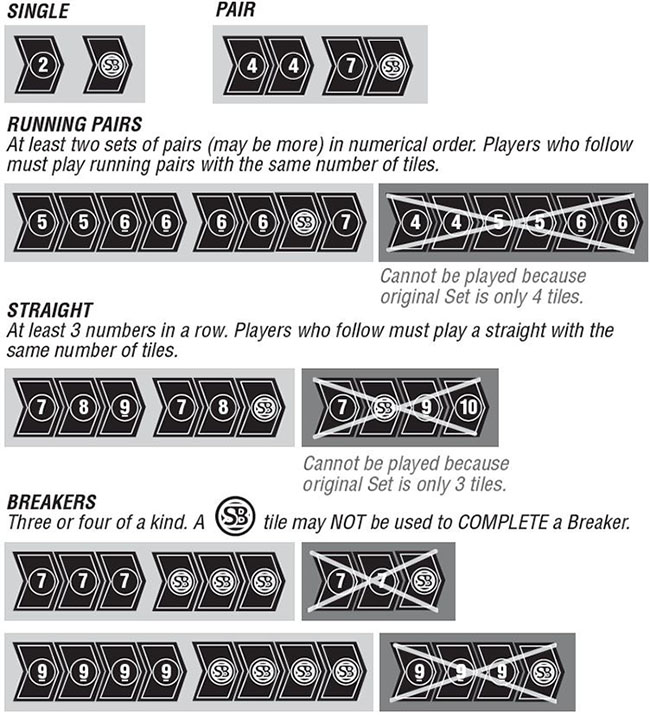

Components
- 64 tiles
- Reference Sheet
Object of the Game
Be the first player to score 50 points. Points are scored by counting the number of tiles left in opposing player's hands after the first person has gotten rid of all of their tiles.
Setup
Place ALL tiles on the playing surface numbers down. Mix the tiles by shuffling them together on the table. Each player draws a tile.
The person with the highest tile goes first. This is called the LEAD. (The highest NUMBERED tile is a 15 and the  beats everything else!)
beats everything else!)
-
4-player
Each player selects 16 tiles.
Players place the tiles in front of them so that only they can see the numbered side. These tiles make up their hand.
-
2- or 3-player Game:
For a 2- or 3-player game, each player selects 20 tiles. Unused tiles are placed, facedown, to the side of the playing area.
Game Play
A. Playing the First Round
The Lead lays down a Set of their choice from their hand of tiles. A Set can be a single tile, a pair of matching tiles, running pairs, a straight or a Breaker. (See the table below or the reference sheet for samples).
You've heard of having to follow SUIT? In Skip-Bo Breakers, you now have to follow SET.
Continuing clockwise, players must MATCH or BEAT the Set laid by the player who went before them. If a player cannot play a legal Set, they pass.
Play continues this way, with players matching or beating the tiles played by the player before them, until all players have passed their turn.
The last person who is able to lay down tiles in a round wins that round and becomes the Lead for the next one.
For example, Anne is the Lead for the first round. She's playing with Mark, Matt and Dale.
Anne lays down a pair of 4s: 
Mark follows by laying down a pair of 5s: 
Matt lays down a pair of 7s.: 
Dale lays down a pair of 9s.: 
The other players don't have a higher pair to lay down so Dale wins this round. Dale is now the Lead for the next round.
 Tiles
Tiles
Tiles with  are wild. They can be used to complete any Set. (They may not be used to complete a Breaker but more about that later).
are wild. They can be used to complete any Set. (They may not be used to complete a Breaker but more about that later).
Note: there is no hierarchy of sets. For instance, a straight does not beat a pair.
Only a higher pair or a Breaker beats a pair. Only a higher straight or a Breaker beats a straight.
B. Playing Subsequent Rounds
Again, the Lead chooses which Set they want to play.
Rounds continue this way until someone has gotten rid of all of their tiles. That player is the winner of this round.
Breakers
There is one time when a player can play something other than the Set led.
A Breaker is three OR four of a kind and may be played on ANY set. A Breaker can only be beaten by a higher Breaker. A  tile cannot be used to COMPLETE a Breaker.
tile cannot be used to COMPLETE a Breaker.
3 Breaker

4 Breaker- A Breaker made up of four tiles beats a Breaker made up of three tiles.

Notes:
A player who passes during a round can get back into that round if play comes around to them again.
At the end of each round, tiles played are turned over, so numbers aren't showing, and are moved to the side of the playing area.
The winning player cannot continue to lay down tiles in the Set to get rid of tiles. Once the other players have passed, that round is over.
Leads do not have to play the Set played in the previous round.
Breakers must be natural meaning the wild tiles cannot be used to complete a Breaker.  tiles may only be used to create a Breaker made up of other
tiles may only be used to create a Breaker made up of other  tiles.
tiles.
Straight Sets or Running Pairs played must match the number of tiles played in the original Set led.
For example, if the straight led consists of four tiles (3,4,5,6), straights that follow must also consist of four tiles. You CANNOT lay a straight of five tiles if the original Set laid was four tiles, etc.
Possible Starting Sets
Sets below show a legal Set followed by a legal next play and then an illegal next play, with explanation.

Scoring
The score is now tallied as follows: the winner scores one point for each tile left in the other player's hands.
To begin the next series of rounds, ALL of the tiles are again placed in the middle of the playing area face down and mixed by shuffling them together.
Players again draw the appropriate number of tiles and the winner of the last round is the first Lead for this one.
End of the Game
The first player to get 50 points wins the game!
Continue Reading


